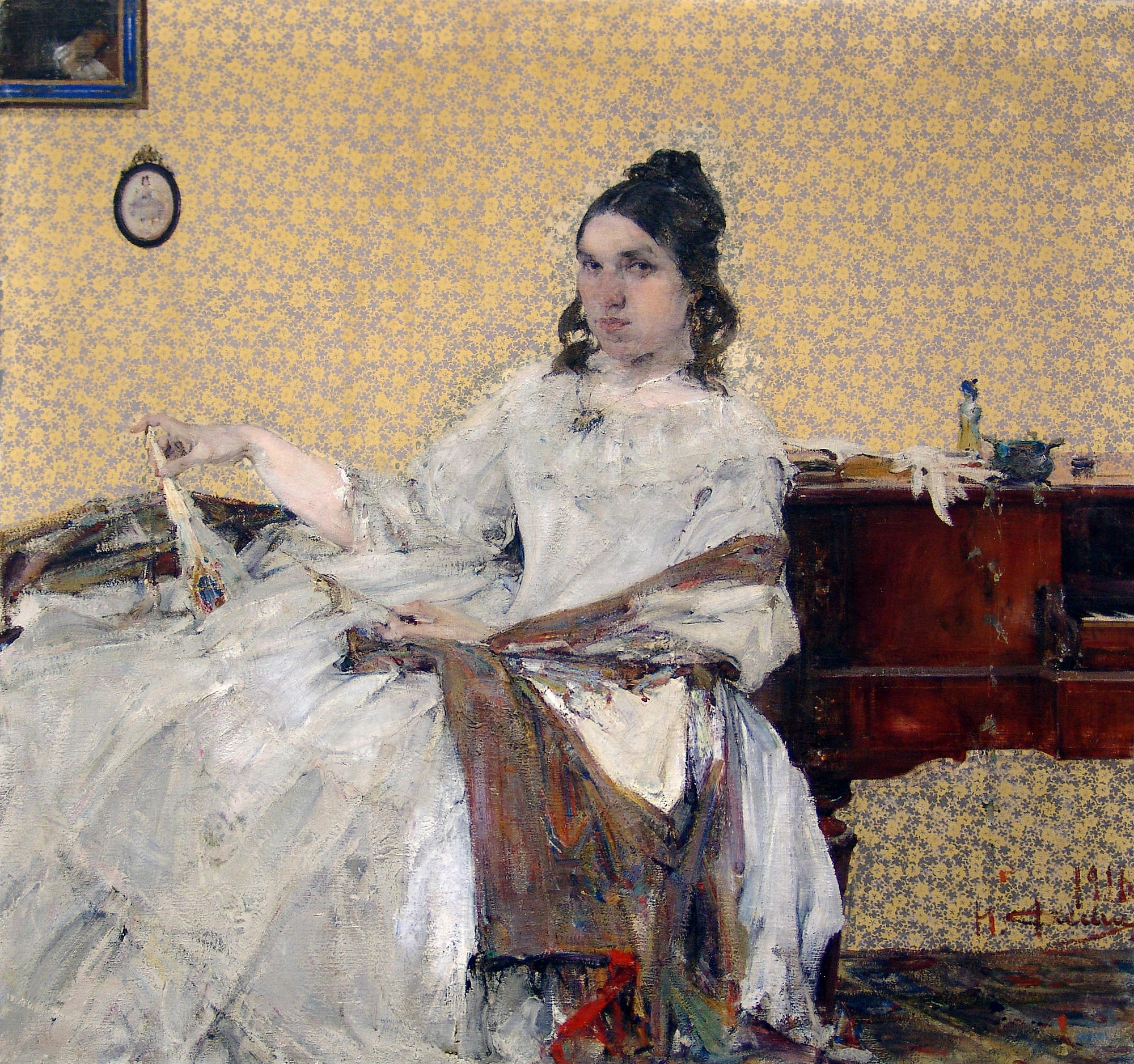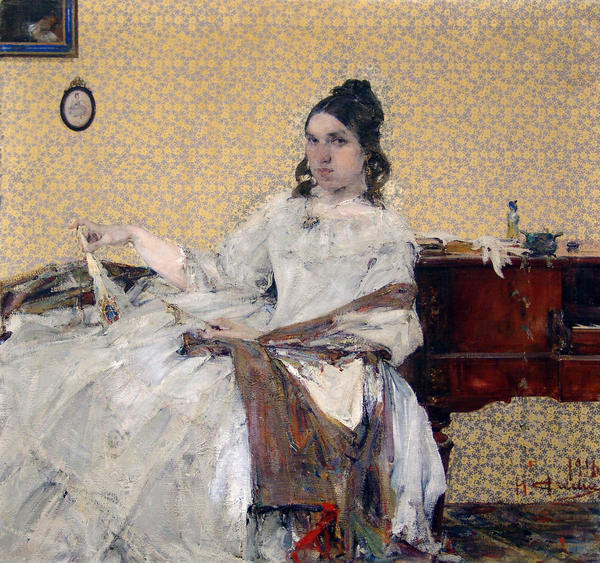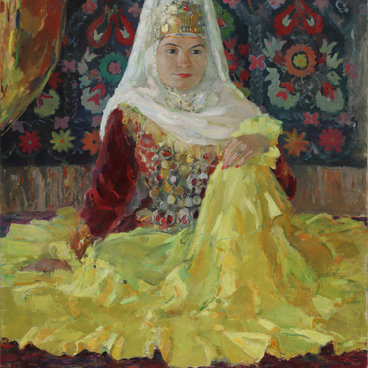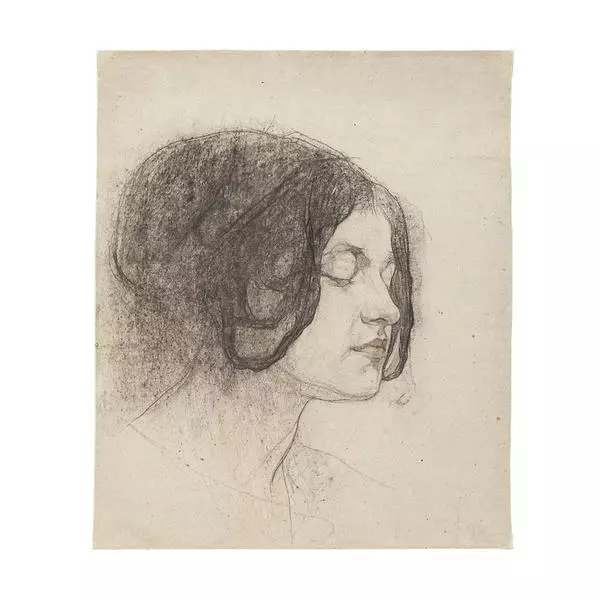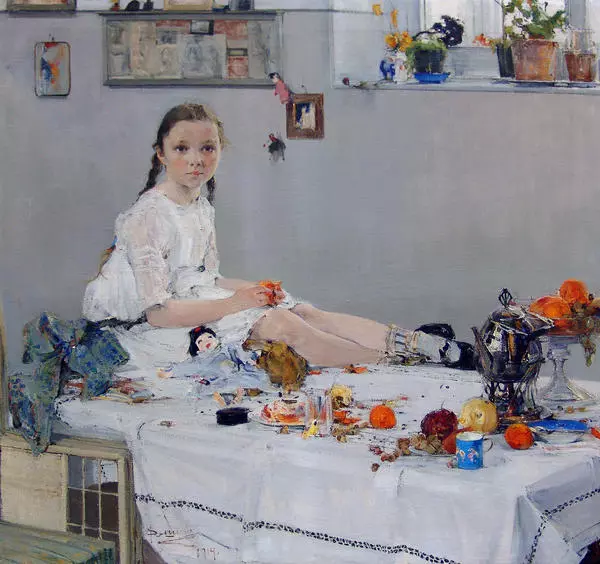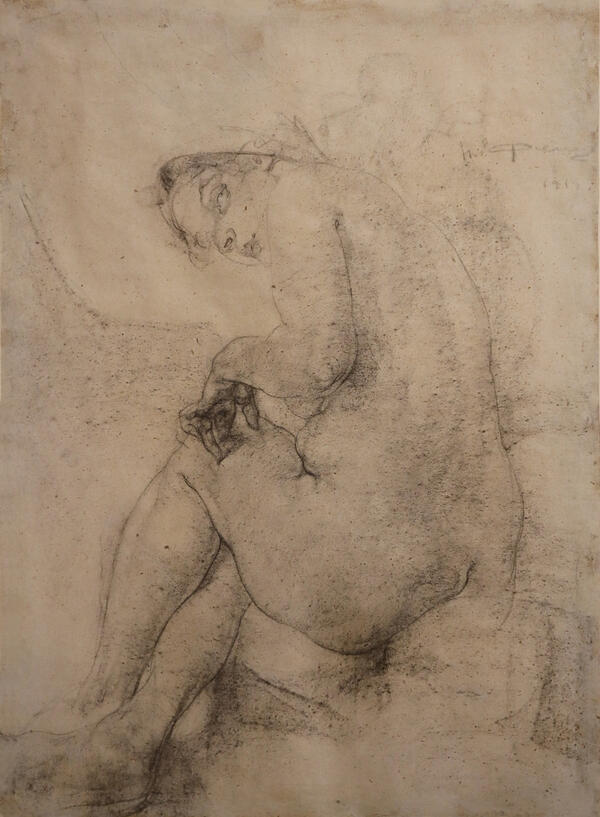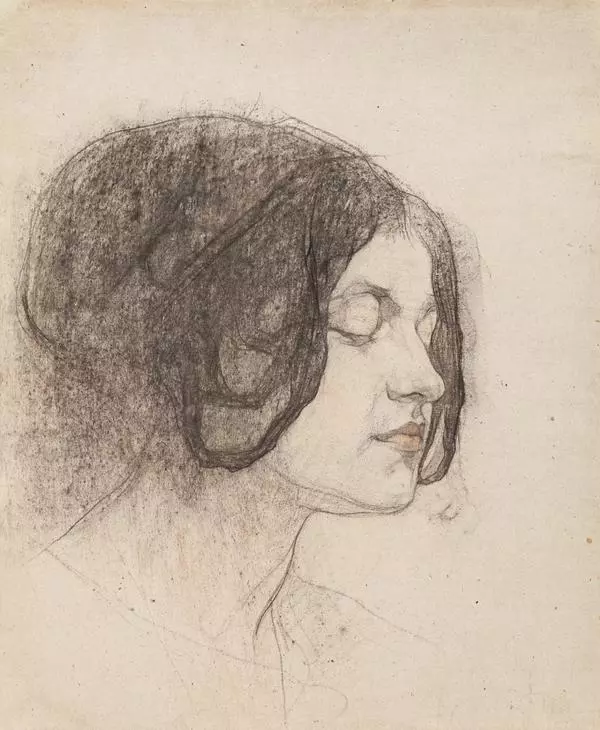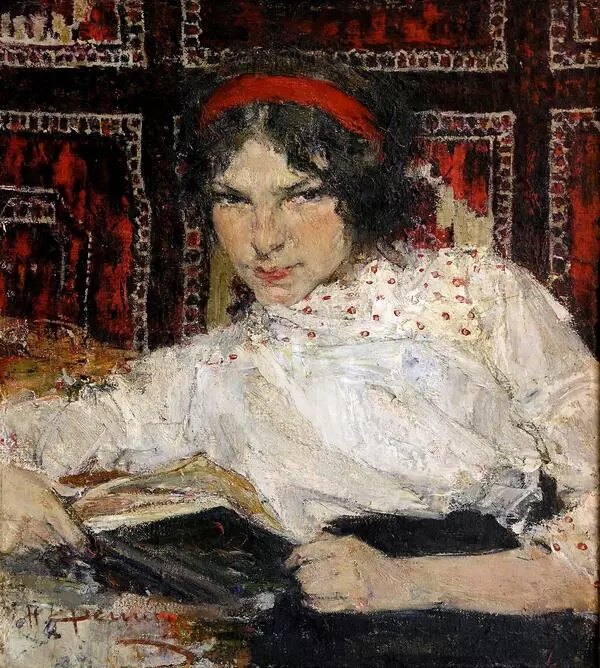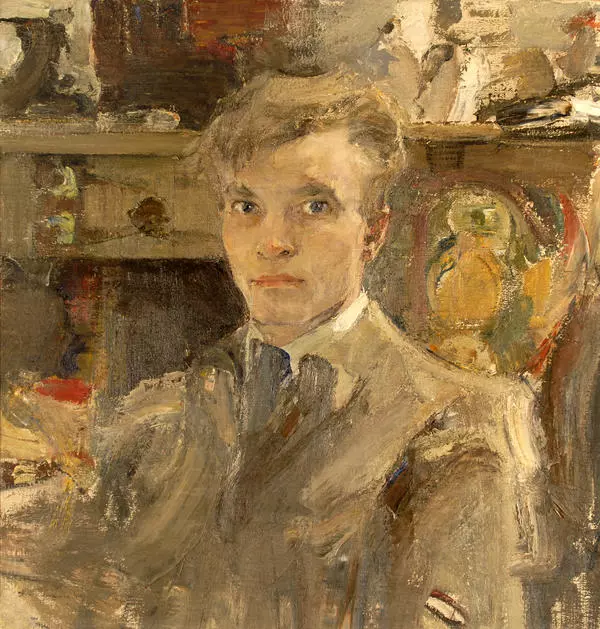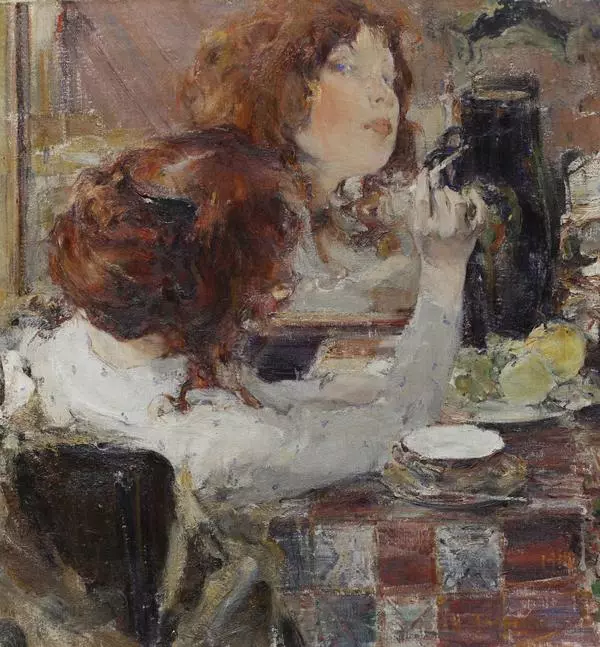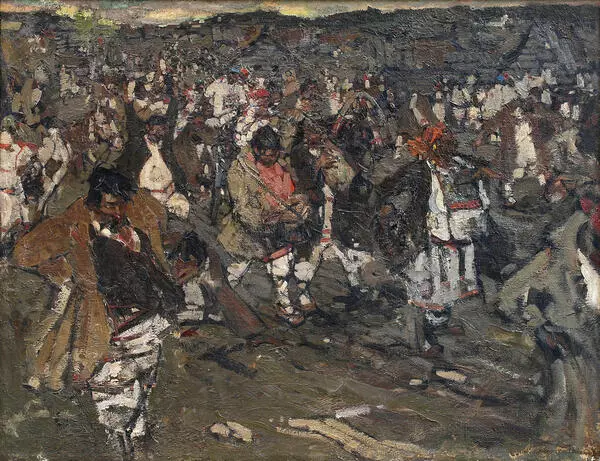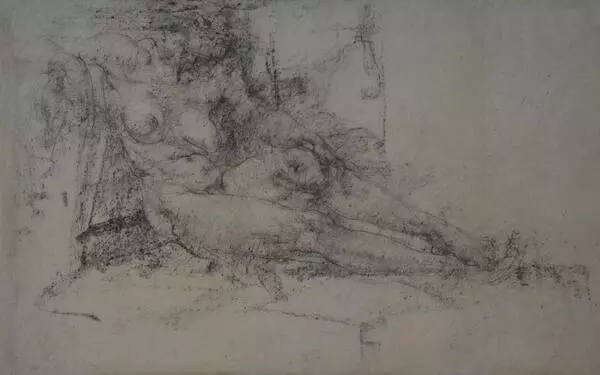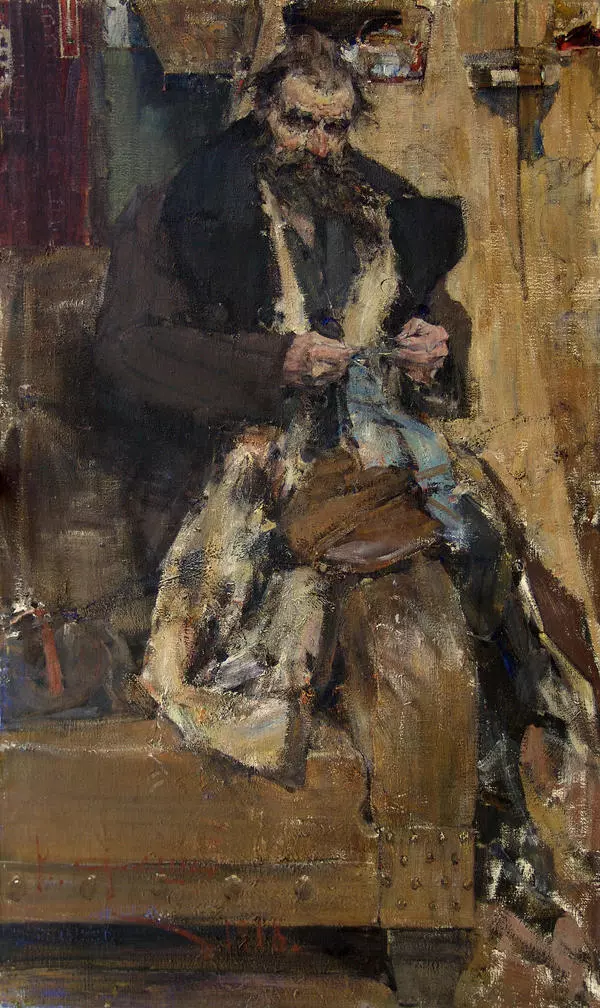Portrait of Nadezhda Sapozhnikova, sitting in a ball gown by the grand piano against a backdrop of wallpaper, is one of her five portraits painted by Feshin. Here your attention is first of all drawn to the intricate background, which indicates that Feshin was an artist in the Art Nouveau era. Patterns on the wall are more detailed than the subject of the painting, and this creates an effect of inverse perspective.
Artist opposes planar to dimensional, mechanical to alive, strict regularity of the background to disorder of folds of a white dress. Fading of lilac, violet and grey tones softens a tough shift from brown to white.
Since 1910 Feshin started to teach in the Kazan School of Fine Arts where he had studied before. Nadezhda Sapozhnikova was one of his first students. She was 4 years older than her teacher and soon she became his close friend. According to the memories of her niece Varvara Adoratskaya, she was well-educated and active woman with strong, rather a man’s, character. After a while Sapozhnikova started to give classes in the School of Fine Art and opened her own workshop, where professors and students liked to gather.
Artist opposes planar to dimensional, mechanical to alive, strict regularity of the background to disorder of folds of a white dress. Fading of lilac, violet and grey tones softens a tough shift from brown to white.
Since 1910 Feshin started to teach in the Kazan School of Fine Arts where he had studied before. Nadezhda Sapozhnikova was one of his first students. She was 4 years older than her teacher and soon she became his close friend. According to the memories of her niece Varvara Adoratskaya, she was well-educated and active woman with strong, rather a man’s, character. After a while Sapozhnikova started to give classes in the School of Fine Art and opened her own workshop, where professors and students liked to gather.
Feshin painted a famous portrait of little Varya Adoratskaya exactly at this workshop.
Sapozhnikova came from a well-known merchant family in Kazan and had the opportunity to help others with money. She was a patron of arts and bought paintings of school teachers and students at a high price, paid for education of lower-income pupils. She first started helping Feshin by ordering portraits. “I recollect my friendship with one of my students, madam N.M. Sapozhnikova, with special gratitude. She was really interested in my art and I painted a few big portraits for her. I was working on them at her workshop and I think it was the best that I had done at that time”, - wrote the artist.
This portrait was exhibited in the 45th road show and wasn’t returned. Sapozhnikova saw it in Moscow commission shop by chance and bought back. She had had eleven works of the master in her collection when Feshin immigrated.
Sapozhnikova came from a well-known merchant family in Kazan and had the opportunity to help others with money. She was a patron of arts and bought paintings of school teachers and students at a high price, paid for education of lower-income pupils. She first started helping Feshin by ordering portraits. “I recollect my friendship with one of my students, madam N.M. Sapozhnikova, with special gratitude. She was really interested in my art and I painted a few big portraits for her. I was working on them at her workshop and I think it was the best that I had done at that time”, - wrote the artist.
This portrait was exhibited in the 45th road show and wasn’t returned. Sapozhnikova saw it in Moscow commission shop by chance and bought back. She had had eleven works of the master in her collection when Feshin immigrated.
